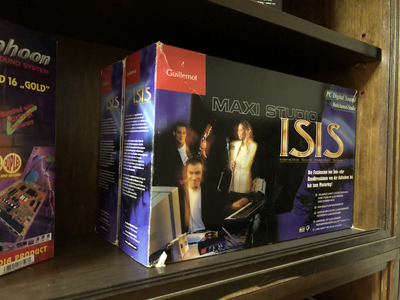Danger Manfred wrote on 2023-10-17, 20:36:Bumping because this also interests me and I want to see OP getting help, but cannot provide help myself right now.
However, I t […]
Show full quote
Bumping because this also interests me and I want to see OP getting help, but cannot provide help myself right now.
However, I think it would be helpful to know the exact motherboard you're using, and the driver version you installed (source might also be interesting).
I might be able to provide the original driver CD image tomorrow if that helps.
edit:
Are all of the components listed installed in your device manager?
Because that's how it is supposed to look, and in that case you should be able to use wavetable music for MIDI at least in DOS games running in Windows, and load different soundbanks in the corresponding software.
I´ve tried all the drivers available from both the wayback machine copy of the site, as well as those we can find on Vogons, all the devices install and I can configure them the way I want, no conflicts. Using driver 190 (the version with SB). I am running on a Pentium 233 MMX, using Intel chipsets, the Maestro chipset seems to work with no problem in TDMA mode.
I narrowed the problem of no Sound in Pure DOS to the following: on DOS only, the maestro.com and icodec.com files initialize the Maestro SB Pro mode properly (you must call both, in this order), however, the Dream 9707 is not fully initialized and the audio from the Maestro is routed through it on inputs 7/8 (which must be selected and unmuted).
There is a selector on the windows drivers, and also on the High Level SDK libraries they provide, but the DOS initilizer for the Dream is just broken, I tried to reverse engineer it, it seem to only load the "boot" commands (it´s hardcoded into the exe), but it does not load rom or soundbank.
I found an ugly way to do it, if you tape the line A-15 on the PCI bus, 15th pin on the back of the card, you disable the reset line. So you can boot in Windows, load whatever you want, and hard reset the machine (the card will remain initialized). Then on dos you call maestro.com, icodec.com, and it works, once then I find my computer won´t turn on until I remove the card and boot without it. VERY ugly way...
There is an early version of linux drivers with source code online, but it currently does not load soundbanks as far as I am aware, I will look into porting it to djgpp and DOS.
I tried also using 94binit that was being used on other cards with the 9407 and 9707 but it did not work out for me, it says it can´t detect the card. I tried hacking the check on the exe to force the execution but the program ends with an error. I think the way this card does it is through the GPIO lines of the Maestro-2EM (which are normally used for modem communication??) very strange design...
Another issue, but this seems to be related to the Maestro chipset since I found other examples of it on other cards. If you run FM Synth within Win9x, the playback is rised in pitch. I am not sure by how much though...
On the MPU problem under Windows, I came across someone else in Vogons reporting the same issue in Win98, I wonder if Win95 would not work either.
